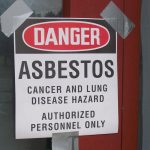Following the Bureau of Meteorology’s latest annual climate statement, three-month forecast and the extended heat conditions over much of Australia, work safety authorities have issued special heat warnings to employers.
In the report, the Bureau describes 2018 as a year of “protracted drought and persistent warmth”, with rainfall “significantly below average”. They also released predictions of warmer than average days and nights for most of the nation in the first three months of the New Year.
Safe Work Australia responded with increased calls for greater awareness of heat stress and heat-related illnesses, reiterating that the risks aren’t confined to those who work outdoors. Workers in factories, roof cavities and drivers are also at risk of heat-related illnesses and employers have a WHS duty to manage risks in the workplace, including the risks of working in hot conditions.
As part of this push, Safe Work Australia has reiterated the need to identify and address risks and hazards in consultation with PCBUs and workers, but especially including the expertise of health and safety representatives in the workplace.
ACT Work Safety Commissioner Greg Jones explained that employers needed to be mindful of increased risks in hot weather and that they needed to ensure that heat exposure to workers was limited to ensure their safety.
“This is particularly critical in trades or industry where workers are in the sun or in hot environments such as kitchens or laundries… Workers need to ensure they stay hydrated, take breaks and wear adequate sun protection. Employers should organise outdoor or strenuous work for cooler times of the day where possible,” the Commissioner says.
The NSW Resources Regulator reiterated these concerns, but also emphasised that there are unique risks to working in hot conditions outside of heat-related illnesses,”including the loss of grip while handling objects due to sweaty hands, mistakes, slips or falls due to heat fatigue or fainting, not following proper safe work procedures, burns from contact with hot surfaces or substances, and sunburn”.
The regulator noted that heat illnesses can be incapacitating or fatal, and employers can minimise the risk by “modifying the workload, re-scheduling work to cooler times of the day, engaging mechanical aids to minimise physical exertion, [and] providing workers with access to drinking water, shaded rest areas and regular breaks”.




